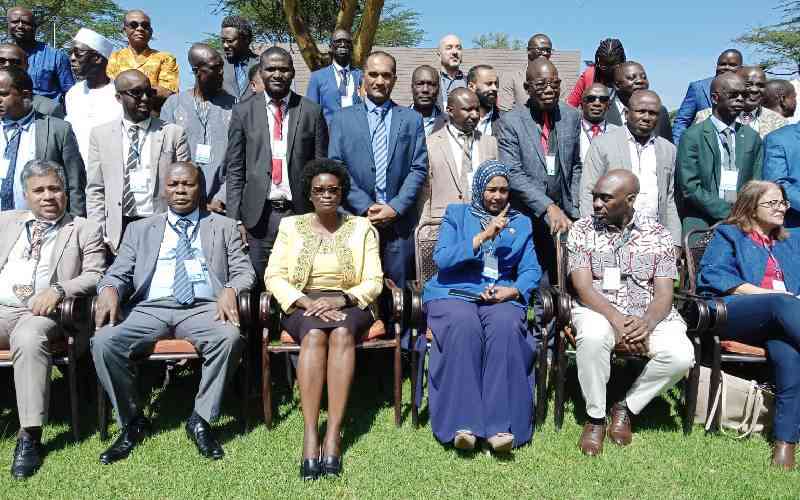 |
|
Workers sort good maize from cobs affected by MLND at Moi's Bridge in Uasin Gishu County. As many as 70 per cent of farmers in the main growing regions may have been affected by the virus. [PHOTO: KEVIN TUNOI/STANDARD] |
Nairobi; Kenya: An outbreak of Maize Lethal Necrosis Disease (MLND) may reduce maize production by almost a third this year as yields fall and growers abandon the grain for other crops, the Cereal Growers Association has said.
As many as 70 per cent of farmers of the staple food in the main growing regions may have been affected by the virus, Anthony Kioko, chief executive officer of the industry body, said in a recent interview. All of the maize varieties grown in Kenya are susceptible to the disease, he said.
"We expect a 30 per cent reduction in production," Kioko said. "Control methods like burning and cutting achieve little. The only solution is to develop resistant varieties," he said.
The impact of the disease can been felt in the whole maize value chain. To help control MLND, the maize seeds have to be dressed with an insecticide in addition to a fungicide seed dressing. Seed producers have incurred an extra cost in the production of seed maize. Kenya produced 2.8 million metric tonnes of maize in the marketing year that ended in June 2014, according to the US Foreign Agriculture Service, which forecast this year's harvest would be the same, before the outbreak.
Consumption is expected to increase 2.7 per cent to 3.75 million tonnes, with the shortfall being met by imports, it said. A ban on genetically modified maize locks out any imports into Kenya from the US, the world's biggest corn exporter.
Maize Lethal Necrosis Disease, first reported in Kenya in September 2011, causes fungal infections in the ears, or grains, of maize plants that makes them unfit for human or animal consumption, according to the Food and Agriculture Organisation (FAO). Changing weather patterns are also contributing to decreased planting of maize, with many farmers switching to other crops to "minimise their losses," Kioko said.
Corn is mainly grown in Kenya's western and central regions and most of it is produced by small-scale farmers who work on areas of less than 20 acres (8.1 hectares). Monica Omoro, spokeswoman for Kenya's Agriculture Ministry, didn't respond to an e-mailed request for comment and didn't answer two calls to her mobile phone. Kenya has the highest rate of maize consumption in East Africa at 103 kilogrammes (227 pounds) per person annually, according to the FAO. About 2 per cent of the country's corn harvest was hit by MLND in 2012, it said. It's mainly eaten as ugali.
Maize dropped from the highest price in seven weeks early last week. Futures for December delivery fell 0.8 per cent to $3.53 a bushel on the Chicago Board of Trade.
 The Standard Group Plc is a
multi-media organization with investments in media platforms spanning newspaper
print operations, television, radio broadcasting, digital and online services. The
Standard Group is recognized as a leading multi-media house in Kenya with a key
influence in matters of national and international interest.
The Standard Group Plc is a
multi-media organization with investments in media platforms spanning newspaper
print operations, television, radio broadcasting, digital and online services. The
Standard Group is recognized as a leading multi-media house in Kenya with a key
influence in matters of national and international interest.
 The Standard Group Plc is a
multi-media organization with investments in media platforms spanning newspaper
print operations, television, radio broadcasting, digital and online services. The
Standard Group is recognized as a leading multi-media house in Kenya with a key
influence in matters of national and international interest.
The Standard Group Plc is a
multi-media organization with investments in media platforms spanning newspaper
print operations, television, radio broadcasting, digital and online services. The
Standard Group is recognized as a leading multi-media house in Kenya with a key
influence in matters of national and international interest.









